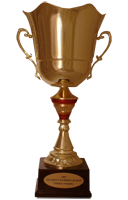WRIGHT’s INBREEDING COEFFICIENT (IC)
Inbreeding coefficient IC (other abbreviation used in literature: WIC, IK, COI, FX, F ) can theoretically range from 0 to 100%, and shows the degree of relationship between the perspective parent dogs and indicates the possibility that two alleles of a gene are completely alike with another dog in the pedigree, i.e. they originate from the doubling of an allele in one of the ancestors. The primary consequence of inbreeding is to increase homozygosity. The inbreeding coefficient is a function of the number and location of the common ancestors in a pedigree. According to the experts is also recommended that an individual’s IC should not exceed 6% counted from the 5 generation pedigree, which is about the same as breeding among cousins, and 9% counted from the 10 generations pedigree.
FCI recommendation for rare breeds is that IC should not exceed 10%.
Wright’s equation for calculating the Inbreeding Coefficient as devised by Sewell Wright in 1922 is:

Fx is the inbreeding coefficient of the dog in question, Fa is the inbreeding coefficient of the common ancestor, n1 is the number of generations from the sire to the common ancestor, and n2 is the number of generations from the dam to the common ancestor. Since the inbreeding-coefficient (IC) shows only the relation between 2 dogs, out of a match of 2 highly inbred dogs (e.g. a match of 2 littermates) which themselves come out of 2 non-related parent-dog-bloodlines, we can get an IC nearly 0% (because there are no common ancestors in the sire's/dam's bloodline). A very simple method to overcome this problem is the calculation of the AVK. This method doesn't replace the calculation of the IC but gives for the enough information for the average breeder.
ANCESTOR LOSS COEFFICIENT (AVK)
Indicates to us the suspected loss of ancestors, when computed with which one can reconstruct the in-breeding in earlier generations. The AVK for n-generation family tree is calculated by the number of actual (independent - unrepeatable) ancestors, and the total number of possible ancestors. Responsible breeder values the health of their animals (and future puppies) and are ready to pursue this information as the demand for this marvelous breed increases and further need for continued good health of the breed increases with that demand.





